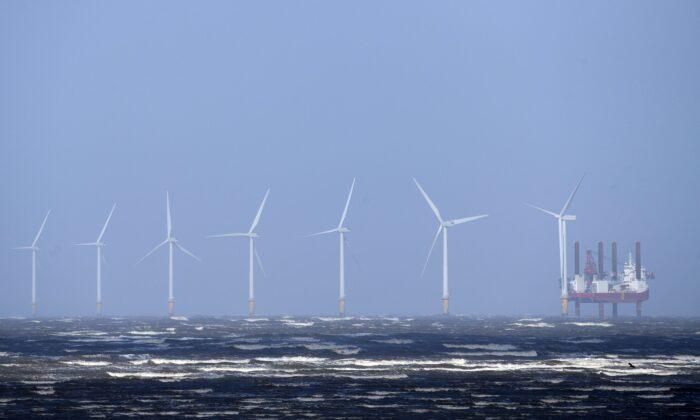A key government auction for renewable energy has failed to award any contracts to offshore wind projects, dealing a blow to the government’s hopes of decarbonising the UK’s electricity production.
It’s the first time offshore wind has been excluded from receiving a contract in the annual Contracts for Difference (CfD) auction, which helps guarantee a stable price for the energy a generator would produce so it can invest with more certainty.
It has been speculated that the low bidding prices could mean no offshore wind power projects would find it worthwhile to try bid for a contract. Speaking to GB News on Friday morning, Foreign Secretary James Cleverly said he couldn’t comment about the specifics of the bidding process, adding, “The UK has shown that you can cut emissions, grow the economy, stimulate technology, because of course there’s loads of high tech stuff to do with offshore wind.”
The absence of new offshore wind contracts is a blow to the government’s goal to deliver up to 50 gigawatts (GW) of offshore wind, up from around 13.9 GW already commissioned.
Announcing the result on Friday, the Department for Energy Security and Net Zero said a record 95 new projects were secured in the auction, up from 93 in the previous round.
However, the projects are expected to deliver nearly 3.7 gigawatts (GW) of homegrown renewable energy, around a third of what was secured last year (11 GW).
The energy can power the equivalent of 2 million homes, the department said.
Of the 3.7 gigawatts of energy expected from the new projects, around 52 percent (1.9 GW) will be generated by solar, 46 percent, or 1.7 GW, will be from onshore and remote island wind projects, 1.4 percent will be from tidal stream projects, and 0.3 percent from geothermal projects, which were included for the first time, the results show.

‘Global Rise in Inflation’
Commenting on the lack of offshore wind, the government blamed the “global rise in inflation and the impact on supply chains” and said the result is “in line with similar results in countries including Germany and Spain.”Energy and Climate Change Minister Graham Stuart said offshore wind is “central” to the government’s goal of decarbonising the electricity supply and that ministers remain “firm” in their ambition to build 50 GW of offshore wind capacity by 2030, including up to 5 GW of floating wind.
“The UK installed 300 new turbines last year and we will work with industry to make sure we retain our global leadership in this vital technology,” he said in a statement.
“This year’s record breaking CfD round builds on years of renewables growth under this government. Just 7 [percent] of our electricity came from renewables in 2010, yet in the first quarter of this year it reached 48 [percent] and this first annual auction will allow us to go further in powering more of Britain from Britain,” he added.
The government said CfD has contributed “towards 29 GW of total wind capacity and helping power the equivalent of around 24 million homes.”
Labour’s shadow energy security and net zero secretary Ed Miliband said the news is “an energy security disaster and a £1 billion Tory bombshell that will push bills up for hardworking families.”
Mr. Miliband accused the government of trashing the offshore wind industry and “blocking the cheap, clean, homegrown power” that the UK needs.
“Ministers were warned time and again that this would happen, but they did not listen. They simply don’t understand how to deliver the green sprint, and [Prime Minister] Rishi Sunak’s government is too weak and divided to deliver the clean power Britain needs,” he said.
According to the National Grid, in 2022, 38.2 percent of the UK’s electricity was generated by “low-carbon” means, with 26.8 of the power coming from wind.
When a project wins a contract in a CfD funding round, the generator would supply energy at an agreed “strike price” during the contracted period, which is typically 15 years.
If generators sold energy for a price lower than the “strike price,” a state-owned company that signs contracts with them on behalf of the government will top up the difference with money raised through a green levy on energy bills, but if the market wholesale price is higher than the strike price, generators need to pay the difference back to the government via the state-owned company.
Over the years, the growth of low-carbon energy has benefited from the CfD scheme, but the process has encouraged companies to drive down the “strike price” to win contracts. Rising inflation has also spiked the supply chain cost.
A climate think tank last month urged the government to increase its CfD budget, arguing the lack of offshore wind would mean higher energy bills for households.







